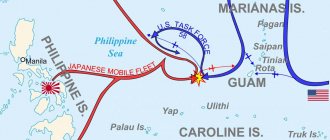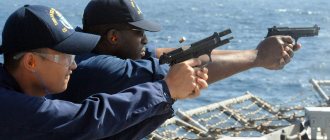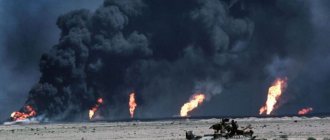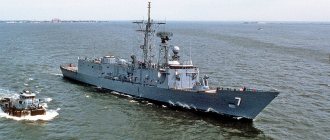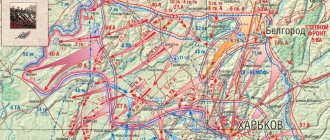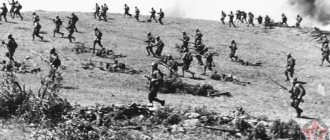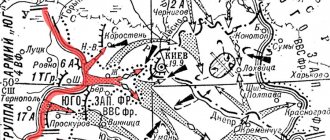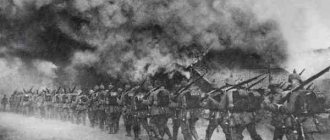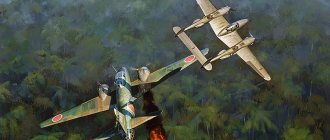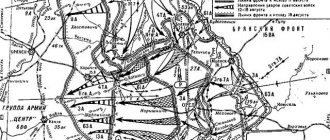On April 17, 1961, an amphibious assault consisting of several hundred local counter-revolutionaries who planned to overthrow the government of Fidel Castro by military means landed on the coast of Cuba in the Bay of Pigs (Cochinos) area.
The operation was completely planned by the CIA, arming and providing the paratroopers with everything they needed. However, for Langley it ended in complete failure, almost turning the flared international scandal into a new full-scale world war.
Disgusting men tell how Cuba was able to fight off an American attack with cunning scouts, wooden planes and T-34 tanks.
Viva la Revolucion!
Cuba celebrated the New Year of 1959 the way it later spent it—revolutionarily. On January 1, the armed forces of Fidel Castro and Ernesto Che Guevara were able to capture Havana and overthrow the military dictator Fulgencio Batista, after which representatives of the renewed state announced that they were now heading towards building socialism and close cooperation with the USSR.
The expropriation began in favor of the people of property acquired under Batista, both from those close to the dictator and from wealthy strata of society. Wealthy generals, bourgeois and intellectuals were forced to flee to the United States, fearing reprisals from workers and peasants, intoxicated by the spirit of revolution.
Fidel Castro
The American authorities reacted with hostility to the new socialist Cuba. In fact, under their noses, not only a state was formed from the opposing camp in the Cold War, but also the main foothold in the Caribbean for the main enemy - the Soviet Union.
Just a couple of months after the revolution in Cuba, an emergency commission was assembled in the administration of President Eisenhower, which was supposed to determine the further vector of work on the “red” neighbors.
Kennedy and Eisenhower
Under the leadership of CIA chief Allen Dulles, a plan is being created to quickly defeat the revolutionary government of Castro. The task was clear - it was necessary to put an end to the socialists before they could get back on their feet.
The emphasis was on two main points. To begin with, from refugees from Cuba it is necessary to create detachments of counter-revolutionaries from the most implacable opponents of the new government so that at the right time they can return to their homeland as saboteurs and intelligence officers, armed and trained.
At that time, the overwhelming number of refugees did not need extra motivation - in just a couple of weeks, the new government of Cuba deprived them of high positions and property. Among those who fled to America there were many military personnel, including high-ranking ones, so the issue of preparation was practically resolved - the CIA could only issue weapons and coordinate the actions of the troops on the spot.
The second point is that radio towers should be installed on the coast that will tell Cubans about the horrors of the rule of the new dictator and his henchmen.
President Eisenhower personally allocated about $13 million for the operation, but the process was led in Langley. The State Department and senior CIA officials agreed that everything would be carried out in the strictest secrecy. The military was involved in this matter only so that the Pentagon would provide strongholds for future saboteurs and American support forces.
The most senior representatives of the security forces and the administration were given the task of ensuring that the world community should not get wind that the operation to overthrow Castro was being prepared by the CIA. Of course, everyone will already understand that it could not have happened without the Americans, but the United States had to act exclusively as a “peacemaker”, acting on the side of the Cuban government in exile.
Here the first puncture was made. The CIA believed that Cuba would not soon recover from the revolution, and this was true, but only partially. According to some sources, among the refugees there were agents working for Castro. She reported to Havana that the United States had launched a full-scale sabotage operation, for which the revolutionary government began to carefully prepare.
Some political terms
The 20th century presented world history with several new phenomena that should be briefly discussed in order to better understand the situation in Cuba in 1961.
- Deep state or “deep state”. This term was introduced in 2014. It means close cooperation between intelligence agencies (often the police, national security agencies and the army) with leading politicians. This interaction takes place secretly, which causes international scandals after the information becomes available to the public. Cooperation between security forces and government agencies is aimed at carrying out coups in other states in order to install their own people in power.
- The “fifth column” is people and organizations operating on the territory of one state, but representing the interests of another. It was the “fifth column” that was often the support that a superpower needed to organize a coup.
Bay of Pigs on a map of Cuba
Landing at the Bay of Pigs
While the CIA was thinking about how best to overthrow Castro, John Kennedy came to power in America itself, blaming Eisenhower for allowing the “Reds” to settle a hundred miles from the US borders.
A new president with such a position could not but approve of the operation, but the new administration took it somewhat lightly, allowing intelligence to do everything without modifications in accordance with the already formed plan.
In March 1961, the future government of the country was formed from emigrants, consisting of José Miro Cardona, Manuel A. Verona and Manuel Rey. Everyone was just waiting for the go-ahead.
It was decided to carry out the amphibious assault in April in the Bay of Pigs, on the southern coast of Cuba. First, it was necessary to destroy military airfields from which the Cubans could take 24 aircraft into the air.
On April 15, 8 unmarked B-26 bombers moved toward their targets. In the future, the CIA planned to present these pilots as patriots who were tired of putting up with Castro’s machinations and went on the warpath, while they were successfully supported by other freedom fighters from the sea.
However, Cuban intelligence learned about the raid a little earlier and replaced the planes at the bases with wooden mock-ups. As a result, the planes bombed the “doll”, and anti-aircraft installations on the ground were able to shoot down one and seriously damage another bomber.
Another pilot who landed in Miami asked for political asylum from the United States and said he was a Cuban Air Force officer disillusioned with Castro's ideas. Corrosive journalists, however, caught him making inaccuracies several times, so the press conference was forced to hastily end. John Kennedy, having learned about the failure, ordered no more bombing of airfields, but immediately began the assault. As it turned out, the Cubans were also ready for it.
B-26
In the dead of night on April 17, three groups of paratroopers landed on the beaches of the Bay of Pigs, which were covered from the sea by seven ships equipped with machine guns and anti-aircraft guns. Four infantry battalions and one tank, as well as an artillery battalion, were supposed to break through the flimsy Cuban defenses, but in reality it turned out differently.
At first, only a small group of coastal guards met the landing, but they were able to create the appearance of a battle, while “lightning” flew to the general headquarters - the assault began.
Fidel Castro announced to the population on the radio that the imperialists were attacking and mass mobilization. The main forces of the Cuban army were located 120 kilometers from the battlefield, but the people's militia, who knew about the upcoming provocation and were well prepared, moved to meet the guests.
As a result, a quick landing on the shore by the “gusanos” (worms, as the Cubans contemptuously called the counter-revolutionaries and representatives of the “fifth column”) did not work out. At dawn, unharmed Cuban aviation joined the fun, destroying several ships with ammunition and fuel.
However, the CIA's plan did not end there. A group of paratroopers from “Brigade 2506” (177 people) was landed in the San Blas area, but the locals had known about them for a long time, so they essentially landed surrounded.
By morning, the advantage of the “Reds” became overwhelming - tank formations were pulled ashore and howitzers were deployed, finally driving the enemy away from the shore. In this assault, only one T-34 tank of the defending side was shot down.
The CIA did not give up and used aviation. The Cuban pilots refused to get into trouble, so the Americans took the controls, but an error in the interaction of the links led to the fact that the “red” Air Force intercepted and destroyed two aircraft.
On April 19, 1961, the operation ended in complete fiasco.
Background to the struggle for Cuba
In 1898, the United States captured Cuba from Spain. Even earlier, a concept of US foreign policy called the “Monroe Doctrine” was developed. According to it, the United States should become the main state in the Western Hemisphere. Soon the Americans created their own political regimes in Panama, Guatemala and other Central American countries. But soon, under the influence of national movements, control was reduced, and the countries gained formal independence. For example, in 1934 the United States withdrew its troops from Cuba.
In 1952, military officer and former President Batista established his dictatorship in Cuba. America considered him one of its own. But soon the crimes of the Batista regime, society in the United States began to condemn the interaction of their state with the dictator. In 1959, during the revolution in Cuba, Batista was overthrown and Fidel Castro came to power. Initially, all the media in the United States “trumped” that “their man has come.” Not surprisingly, the American public was captivated by the revolutionaries' fight for freedom.
But soon Castro announced the beginning of socialist reforms, the United States applied sanctions, for example, imposing an embargo on Cuban sugar, the basis of the local economy. Then Castro nationalized all American firms in Cuba, and later reached an agreement with the USSR. The Soviets agreed to buy sugar and also provide military aid to Cuba. The conflict between Castro and the United States has become global. America began preparing a coup to avoid Cuba falling into the sphere of interests of the “Country of Soviets.”
Che Guevara (left) and Castro, photographed by Alberto Korda in 1961.
Consequences
As a result, the attackers lost 114 people killed and 1202 wounded, and this was only among the paratroopers. The exact number of casualties among the amphibious assault is still unknown.
The Cubans were able to capture 5 tanks and shoot down 12 aircraft (including those covering the airborne assault), while the Cuban Air Force did not lose a single one. How many people were killed is unknown, but the damage to the defending side was estimated at $53 million, which was eventually paid by the US government under the guise of a tranche from a certain charitable foundation.
The scandal was incredible - 40 countries condemned the US aggression against an independent state, but at that time there was no evidence of direct American participation. Only in 1986 did a US commission recognize the Bay of Pigs operation as an act of aggression and interference in the internal affairs of Cuba.
However, this did not stop the CIA in any way - attempts were made on Fidel Castro’s life several dozen more times, until he left the post of head of Cuba in 2006.
Bay of Pigs Operation Museum
The attempt to overthrow Castro's revolutionary government in April 1961 was just a warm-up for the Langley bosses before further operations in the Middle East and Asia. However, the Bay of Pigs fiasco is a great example of how a small group of people with a burning heart can defend independence even under the onslaught of such a giant as the United States. Not without the help of Soviet tanks, of course.
